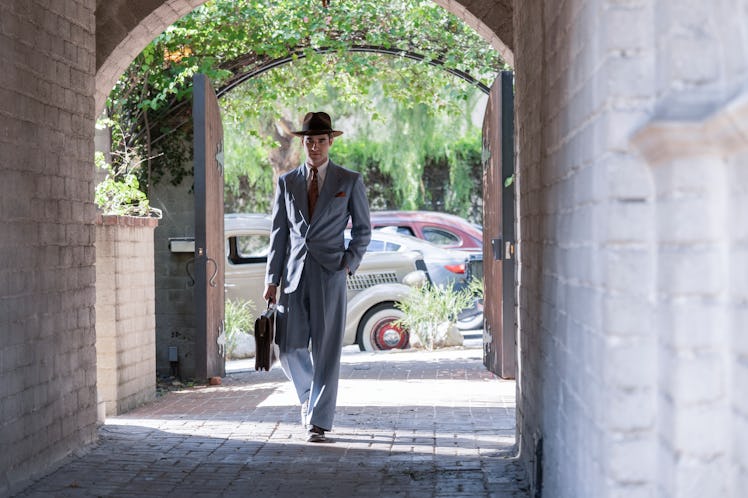
'Hollywood's Ace Studios May Feel Familiar For These Reasons
Netflix's Hollywood is a period piece set at the tail end of what was known as the "Studio System." The year its set in is deliberate: 1947, one year before the Supreme Court heard and decided on "United States v. Paramount Pictures, Inc," declaring the current system a monopoly and forcing the breakup of actors from studios and studios from theaters. But though this is a story set before that systematic breakup, fans are curious, is Ace Studios real? Did it exist before the Paramount case ended the way things used to be done? Warning: Spoilers for Hollywood follow.
Before that SCOTUS decision, known colloquially as the Paramount Decree, Paramount was the largest studio in Hollywood, followed by what was known as "The Big Five" and "The Little Three." The Big Five studios were Metro-Goldwyn-Mayer, RKO Pictures, Warner Bros., and 20th Century Fox, while Universal Pictures, Columbia Pictures, and United Artists made up the Little Three.
All those names should be familiar to today's movie buffs. But fans should notice Ace Studios is not one of them. That's because it's not a real studio. There was no Avis Amberg, or Ace either. Instead, Ace Studios is a mashup of the biggest studios of the period, seemingly taking aspects of MGM, Universal, and the big granddaddy, Paramount Studios, and rolling them into a single entity.
But just because Ace, Avis, and their studio aren't real, and the movie Meg isn't either, doesn't mean that the entire slate of films it's producing are fictionalized. Much like the 20th Annual Academy Awards, where Meg finds itself up against real-life contenders like Miracle on 34th Street and Mourning Becomes Electra, Hollywood takes real movies of the era and reassigns them to Ace Studio's slate. Beyond Glory and The Emperor Waltz were real films, produced and distributed by Paramount.
Much like the studio she ends up running, Avis also seems like a mash-up of real figures. She's partly based on Sherry Lansing, the first female studio head at 20th Century Fox. But Lansing didn't land that role due to her husband's untimely removal. That part of the story is drawn from mixed Irene Selznick, who spent most of her career in the shadow of her husband, David O. Selznick (after whom the David O. Selznick Achievement Award is named), before revealing her talent as a producer after their divorce in 1949.
Both Avis and Ace Studios have just enough reality behind them to feel plausible. But unlike some portions of the story, these mainstays of the series are fiction.